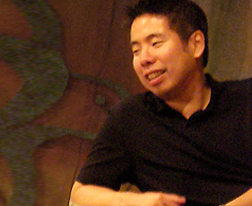Editor’s note: This is a guest post by Andy Liu, CEO of BuddyTV Guide, a channel guide app available on iOS, Android and Google TV.
There is no debating that consumer adoption of Google TV is extremely disappointing.
Logitech has dropped out of the business, several online publications including this one have declared the platform dead. While some new OEMs like Vizio, Sony, and LG have launched new devices with Google TV, it’s not clear that any meaningful customer adoption will come as a result of these deals.
I believe there is one big reason it hasn’t taken off. It’s that Google TV is straddling a dual-strategic approach when it needs to pick one strategy and double down on it.
Google TV needs to be building a platform that embraces a strong developer ecosystem or it needs to close it down and focus on a closed ecosystem like Apple TV and iterate until it has the right consumer product not both.
The problem with Google TV is that it claims that it is a developer friendly platform and embraces the developer community. It does not. Time and time again, Google TV has chosen the route of straddling between building their own apps and trying to engage the developer community to build a killer app for its platform.
For example, there are over 90 second screen startups building apps that could be an extremely compelling use case for Google TV users. Instead of pushing 3rd parties to succeed, Google TV has taken the approach of building its own second screen app without being very transparent with its partners about its intention of building its own.
There is an inherent disadvantage for a 3rd party to build a second screen app, when there will be one that exists native and developed by Google. This is an extremely dangerous position to take with the development community as it takes real investment by companies to build for this nascent platform.
Companies will quickly realize that anything successful will be copied by Google TV and relegated to second class status as Google TV promotes its own apps ahead of those by 3rd parties. Instead of having potentially 90 companies innovating and building compelling second screen apps on the Google TV platform to find a killer use case, Google TV has taken a poor short-term approach of competing against its own developer community.
Google TV in their v2 OTA update last year launched an app called TV & Movies, it’s native to the platform and pre-installed with every install of the update. This update was in direct competition with first screen apps like BuddyTV Guide which Google TV had early versions of internally. While disappointing, it would have been nice to know that Google TV was developing TV & Movies in advance, so we could have built another app focusing on areas that would be complementary to TV & Movies. Instead, we invested a ton of resources to build on a nascent platform only to see a very similar app on Google TV.
Most recently, TV & Movies have updated the app to include favorite channels, one of the most popular features on BuddyTV Guide. As a third party developer on the platform, we have significantly reduced our investment in the first screen app primarily due to the lack of support from Google TV to promote third party apps and the lack of transparency regarding its roadmap that may be competitive to third parties.
Strategically, Google TV needs to pick a strategy and focus on it exclusively. If it is to build a developer ecosystem which allows thousands of developers the ability to innovate and to find that killer app or two, then Google TV needs to re-think its product roadmap to enable developers to be successful. Focus on building great developer tools and listen to the developer community.
If Google TV must compete against a 3rd party developer since it is a “core” feature, then be transparent and work with the 3rd party to cover other white space that might be compelling. Google TV’s platform could focus on in-app purchases, subscription services, developer tools, developer outreach, OEM relationship building, and design resources for 3rd parties would be a great start. Work with developers to develop marketing strategies to get app adoption. Build momentum with the developer community such that more developers come on board. Be transparent about what’s working and what’s not. Help developers avoid pitfalls and use cases that work and don’t work. Identify customer holes for 3rd parties to tackle before they become impediments to adoption. Focus on becoming a real partner for developers.
Or, conversely, shut down the developer ecosystem to get the product right. It’s ok to focus on getting the product right and iterate until there is critical mass before going back to the developer community. Build great apps and find the killer app internally. This, in itself, is a great strategy as well since the developer ecosystem won’t be wasting time potentially competing against Google TV and can wait until there is real market traction to go after.
We want Google TV to succeed. I’ve been a long-term user of Google TV and it’s a good product with a good vision. However, I bought a Google TV for my parents a while ago and it’s still gathering dust –- the product is just not ready for mass consumer adoption. Google TV needs a killer use case and either they need to enable developers to find it or they should focus all their energy on finding it themselves. The success of Google TV is good for consumers and developers; it’s disruptive and will force the TV ecosystem to evolve quicker. I know we’ll be watching closely with anxious anticipation that Google TV will eventually get it right.
